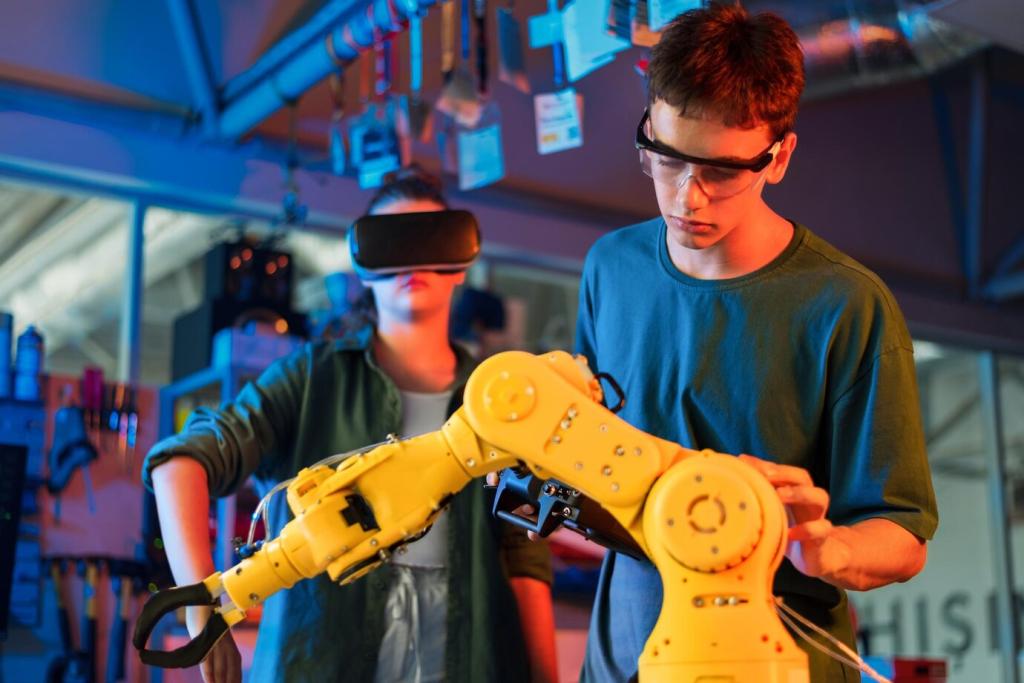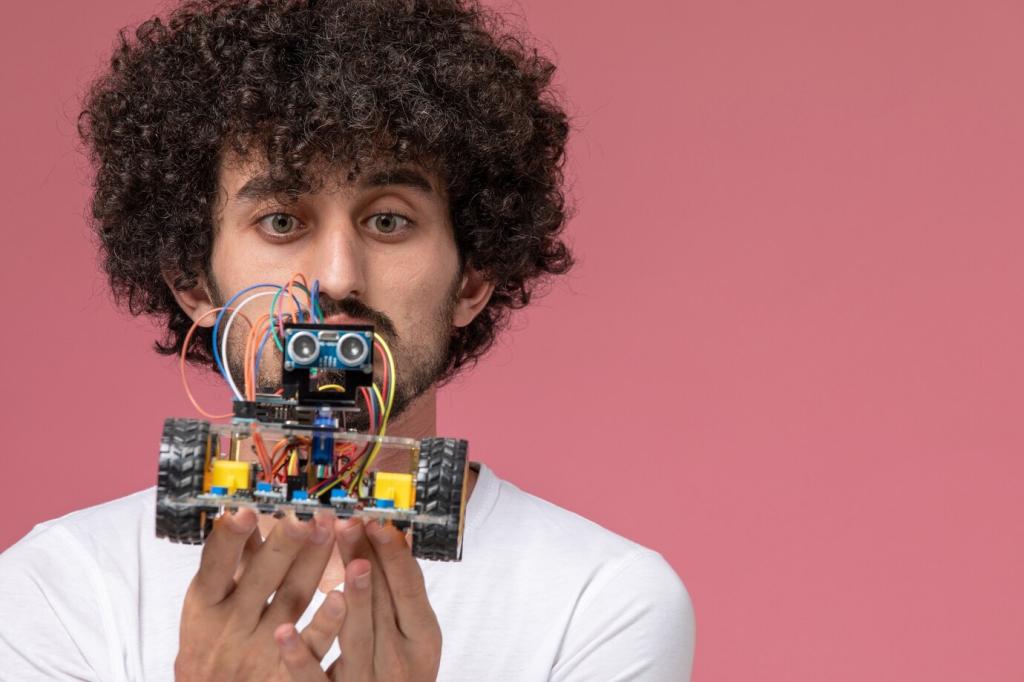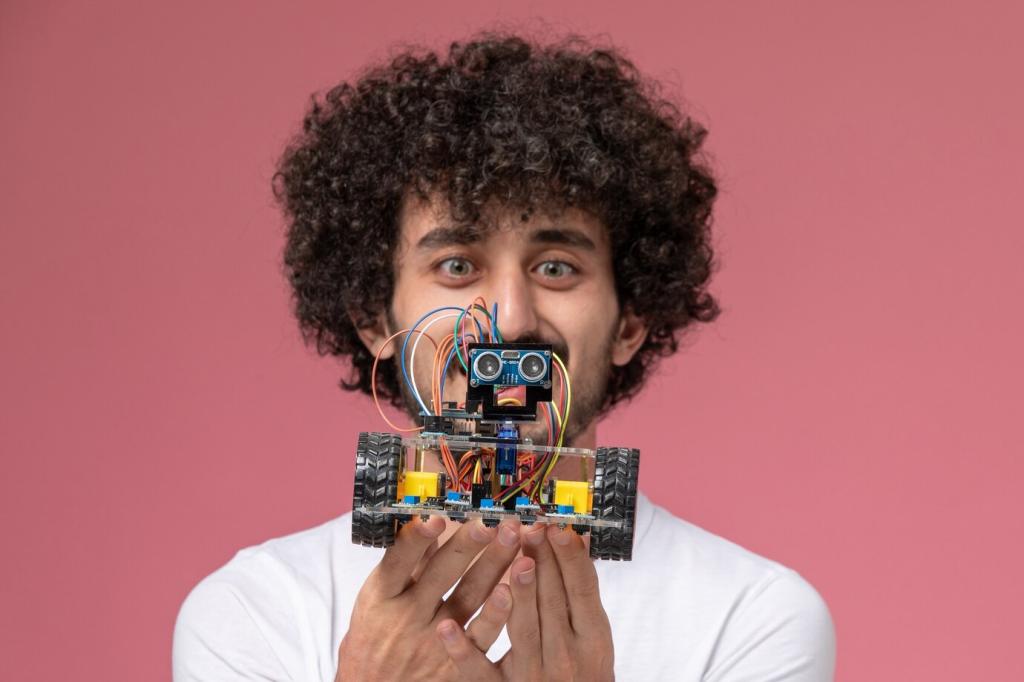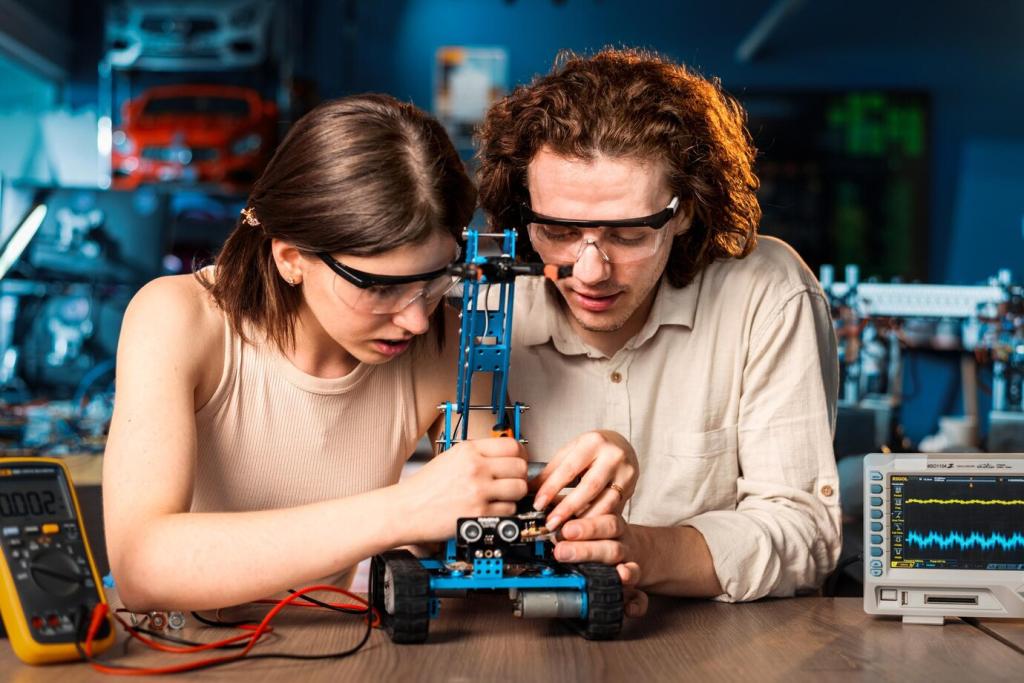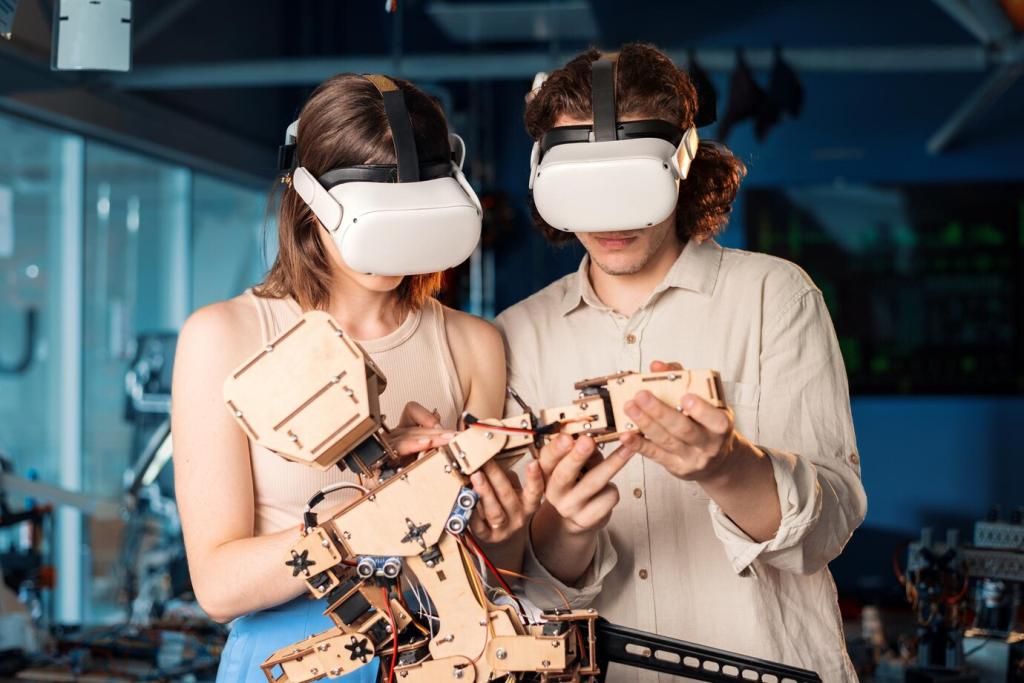Brains and Control: From Microcontrollers to Edge AI
Microcontrollers excel at deterministic timing, while single‑board computers handle heavy vision and networking. A hybrid design offloaded motor control to an MCU and ran perception on an SBC, eliminating jitter and unexpected stalls.
Brains and Control: From Microcontrollers to Edge AI
PID stabilizes motion, feedforward anticipates load, and state machines enforce orderly behaviors. When a conveyor’s load varied, a simple feedforward term reduced overshoot, calming the line and boosting throughput without stronger motors.
Brains and Control: From Microcontrollers to Edge AI
Not every task deserves the same urgency. Assign real‑time priorities to keep loops crisp, and push logging to lower tiers. Share your approach to scheduling—what keeps your control loop on time?


